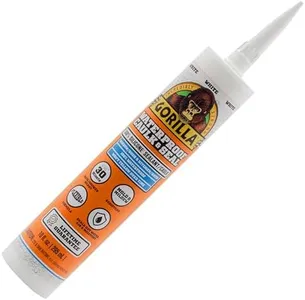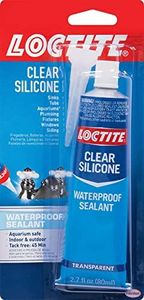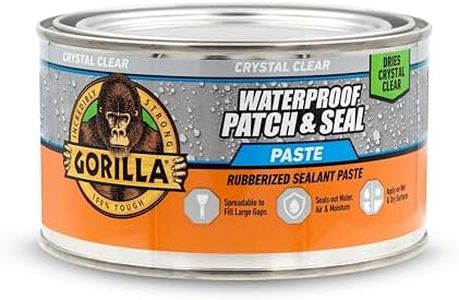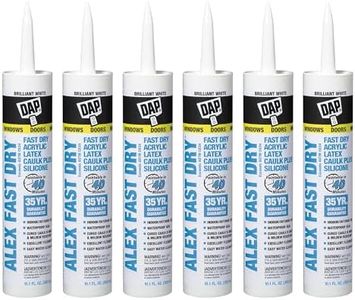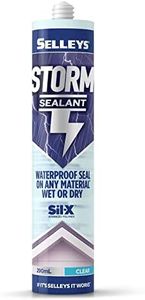We Use CookiesWe use cookies to enhance the security, performance,
functionality and for analytical and promotional activities. By continuing to browse this site you
are agreeing to our privacy policy
10 Best Exterior Caulks
From leading brands and best sellers available on the web.Buying Guide for the Best Exterior Caulks
Choosing the right exterior caulk can help you keep your home protected from moisture, air leaks, and pests while also making surfaces look clean and tidy. Since exterior environments are harsh, the caulk you pick needs to withstand weather, sun, and movement of surfaces. Before shopping, think about the areas you’ll seal, the material you’ll apply caulk to, and how long you expect it to last. Reading labels carefully and matching the caulk’s properties to your intended use is key.Type of CaulkThe type of caulk describes what it’s made of, such as silicone, acrylic latex, polyurethane, or butyl. This matters because different types have different strengths and weaknesses, like flexibility, paintability, and durability. Silicone is best for water resistance and flexibility but is hard to paint; acrylic latex is easy to apply and paint over but may not last as long outdoors; polyurethane offers strong sealing and good paintability but can be harder to work with; butyl is great for gutters and roofs. Think about the surface and what you want—choose silicone for windows and wet areas, acrylic latex for trim or siding you’ll paint, or polyurethane for a long-lasting weatherproof seal on joints.
Weather ResistanceWeather resistance tells you how well the caulk handles rain, sun, temperature swings, and humidity. This is important because outside caulks need to stay intact despite harsh weather. High resistance caulks can resist cracking, shrinking, or washing away. If you live in an area with extreme weather, choose a caulk labeled specifically for exterior or all-weather use. For mild climates, most exterior caulks may do the job, but it’s still smart to check if it’s rated for your climate.
AdhesionAdhesion means how well the caulk sticks to surfaces like brick, wood, metal, vinyl, or stone. Good adhesion keeps gaps sealed over time. Some caulks stick better to certain materials. Check the label to see which surfaces the caulk is best for. If you’re sealing different types of materials, pick a versatile caulk with multi-surface adhesion. For one specific material, choose a product meant for that surface to ensure a strong, lasting bond.
FlexibilityFlexibility is about how much the caulk can stretch or compress as surfaces move with temperature changes. Outdoor joints move a lot, so flexible caulks help prevent cracks or splits. Caulks are often labeled as “flexible,” “high elasticity,” or “moves with surfaces.” For areas that expand or contract (like window frames or between different siding materials), a more flexible caulk is best. For areas that stay pretty steady, flexibility is less crucial.
Cure TimeCure time is how long it takes for the caulk to fully harden and become waterproof after application. This is important because you need to keep the area dry and untouched until it’s safe. Fast-curing caulks are good if you want to finish quickly or if rain is expected, while longer curing types may be stronger or offer better properties. Pick a cure time based on your timeline and the local weather forecast when you plan to apply.
PaintabilityPaintability is whether caulk can be painted over without problems like cracking or peeling. This matters if you want the caulk to blend in with the rest of your home’s exterior. Silicone caulks often can’t be painted, but acrylic latex and polyurethane types usually can. If matching caulk color to your house is important, choose paintable caulk. If you plan to leave the bead as-is, choose a color that matches your exterior.
